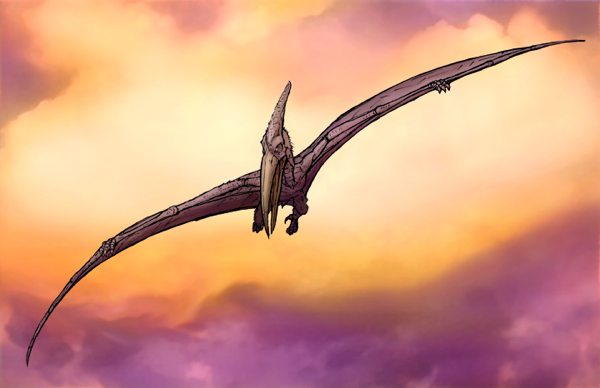 Our World
Our World  Our World
Our World  Movies and TV
Movies and TV The 10 Coolest Stars to Set Sail on The Love Boat
 History
History 10 Things You Didn’t Know About the American National Anthem
 Technology
Technology Top 10 Everyday Tech Buzzwords That Hide a Darker Past
 Humans
Humans 10 Everyday Human Behaviors That Are Actually Survival Instincts
 Animals
Animals 10 Animals That Humiliated and Harmed Historical Leaders
 History
History 10 Most Influential Protests in Modern History
 Creepy
Creepy 10 More Representations of Death from Myth, Legend, and Folktale
 Technology
Technology 10 Scientific Breakthroughs of 2025 That’ll Change Everything
 Our World
Our World 10 Ways Icelandic Culture Makes Other Countries Look Boring
 Our World
Our World 10 Ways Your Christmas Tree Is More Lit Than You Think
 Movies and TV
Movies and TV The 10 Coolest Stars to Set Sail on The Love Boat
 History
History 10 Things You Didn’t Know About the American National Anthem
Who's Behind Listverse?

Jamie Frater
Head Editor
Jamie founded Listverse due to an insatiable desire to share fascinating, obscure, and bizarre facts. He has been a guest speaker on numerous national radio and television stations and is a five time published author.
More About Us Technology
Technology Top 10 Everyday Tech Buzzwords That Hide a Darker Past
 Humans
Humans 10 Everyday Human Behaviors That Are Actually Survival Instincts
 Animals
Animals 10 Animals That Humiliated and Harmed Historical Leaders
 History
History 10 Most Influential Protests in Modern History
 Creepy
Creepy 10 More Representations of Death from Myth, Legend, and Folktale
 Technology
Technology 10 Scientific Breakthroughs of 2025 That’ll Change Everything
 Our World
Our World 10 Ways Icelandic Culture Makes Other Countries Look Boring
10 Cryptids That Could Be Real
Many cryptids are alleged to walk the Earth or dwell deep in its oceans – some of them better-known than others. Even though cryptozoology is considered pseudo-science by many a skeptic with an axe to grind, documented accounts of strange encounters sometimes give even these people a flicker of hesitation.
This list presents ten lesser-known cryptids, each accompanied by stories which should impress and intrigue even those among you who consider yourselves determined skeptics. Nevertheless, a proper scientific attitude is needed when dealing with even the most compelling of stories: whether such creatures exist or not, no one can yet say for sure.

Ri and Ilkai are the names given by tribes in Papua New Guinea to an elusive species of humanoid sea creature that is said to resemble mermaids. Although the existence of such a creature may be quite preposterous from an evolutionary viewpoint, the large number of reports coming from natives has proven very intriguing.
In 1983, two American scientists, zoologist Richard Greenwell and anthropologist Roy Wagner, set up an expedition into an area rich with Ilkai sightings, hoping to solve the mystery of the fabled sea people. The two men expected the creatures to be dugongs, seals or dolphins, mistaken for sea people by the locals. Nevertheless, after seeing the mysterious creatures terrorize small fish in a bay, Greenwell and Wagner drew the conclusion that Ilkai were indeed an unknown species, and that the natives knew very well the difference between them and other sea mammals. Unfortunately, the remoteness of the area and the lack of funding put an abrupt end to their expedition, and the sea people of Papua New Guinea remain a mystery to this day.

The almas are elusive and savage man-beasts that dwell into the mountain ranges of Kazakhstan and Mongolia. Their description somewhat resembles prehistoric man, given their short stature, powerful muscles, hairy bodies and lack of ability to speak. Accounts of the almas go back for hundreds of years, and the natives consider them to be a natural part of their environment.
In 1925, a Red Army cavalry regiment led by general Mikhail Stephanovitch Topilski came across a cave. After the troops fired several rounds into the dark – expecting that enemies might be concealed within – a naked human-like animal ran out screaming, only to die several yards away from gunshot wounds. Topilski documented the animal in detail, mentioning the hairy body, powerful muscles and apelike facial features.
An even more incredible account is that of Zana, a female almas that was captured by the people of a remote village in the Zadan mountains of Georgia. Zana was domesticated by the hunter who trapped her, and strangely enough, bore him three sons, who were almost normal people but with extraordinary strength and notoriously short tempers. Zana died in 1880; the remains of his youngest son were dug up and analyzed by Soviet scientists who subsequently confirmed the fact that his skull indeed exhibited pre-human features.

The agogve of Kenya and Uganda bear some resemblance to the almas, but are smaller in stature and often described as upright walking bonobos with vaguely human features such as long, slender hands. British explorer and hunter J. Cottnay attempted to hunt agogve creatures, only to have the natives persistently refuse to help him. The same thing happened in 1983, when a British team of zoologists was prevented from capturing one by the local people, who hold that the creatures are “the grandfathers of men.” Many cryptozoologists believe that the agogve are remnants of the population of Australopithecus that inhabited Africa roughly four million years ago.

You don’t need to be a cryptozoology buff to have heard about the Yeti and the Bigfoot. China, too, has its own version of an elusive, oversized apelike creature that dwells in deep forests and remote mountain ranges: the yeren.
Unlike the Bigfoot of North America, the yeren has an orange fur and long reddish braids and, according to local reports, is not as shy as its North American cousin. An unusual report comes from 1942, during the bloody war waged between China and Japan. According to eyewitness Liu Jikuan, who was then just a boy, an army regiment passing through his village had captured two yerens, the animals being shackled and dragged wherever the regiment went. What became of the creatures, however, remains a mystery – but sightings of yerens in remote regions of China continue to this day.

Megalania Prisca, formerly known as Varanus Priscus, was a prehistoric monitor lizard – several times bigger than the Komodo dragon – that roamed the Australian outback terrorizing the native fauna. Even though science acknowledges Megalania to be extinct, sightings of monitor lizards (or goannas, as they are known in Australia) the size of saltwater crocodiles have been reported during recent times.
In 1939, for example, a train traveling through New South Wales stopped in its tracks after noticing a huge log on the railway. After several minutes, the log started to move and the passengers and train conductor realized that they were looking at a huge lizard estimated to be around 28 feet (8 meters) in length. More recently, in 1979, Australian herpetologist Frank Gordon had an encounter with what he considered a living, breathing Megalania – the huge lizard sprinting in front of his jeep with enormous speed while he was traveling in the mountains of northern New South Wales.

Kongamato is a cryptid allegedly living in the deep marshes and jungles of Equatorial Africa – an area of special interest for cryptozoology, due to the vast number of cryptids reported there. Kongamato resembles a pterodactyl, with a wingspan of about seven feet (2 meters), and it is supposed to be fiercely territorial. Moreover, it has strong, sharp teeth, which dismisses the possibility of it being a misidentified or unknown species of bird.
In 1932, renowned explorer Ivan Sanderson was engaged in an expedition into the remote regions of Cameroon. One day, he and his team shot down an unusual flying animal that intrigued them – describing it as having a mixture of bat, bird and reptile features. Soon after, the creature’s mate attacked the explorers, who ran away terrified. The local tribes lived in terror of the Kongamato, regarding it as a herald of death – and considerably more dangerous than the lion, leopard, or black mamba snake. Field expeditions in the area are notoriously difficult and the data gathered about the elusive dinosaur-like creatures reported in Equatorial Africa remains scarce.

The Sumatran creature that locals call Orang Pendek somewhat resembles a Bigfoot – only that it is not big at all. Dwelling deep in the jungles of the island, it is said to have both apelike and human features: shortness of stature, extreme strength, and a tendency to shy away from human contact. Dutch colonists reported several sightings during the first half of the 20th century: they described a short hairy creature unlike the orang-utan or gibbon, but rather more humanlike, and capable of walking upright.

The existence of an alleged Australian version of Bigfoot, the Yowie, is an intriguing prospect compared to the potential existence of its cousins on other continents. This is due to the fact that the Australian environment is deemed to be barely capable of sustaining a population of large omnivorous primates.
Nevertheless, sightings of the Yowie still occur – one of the most prominent belonging to former Queensland National Party senator Bill O’Chee. In 1977, when O’Chee was still in school, during a two-day excursion near Springbook, he and his fellow students were apparently harassed by a 10-foot (3 meter) creature with a gorilla-like face, which tore saplings from the ground with incredible ease. The group spotted the creature on several occasions during those two days, and to this day O’Chee has not changed his mind regarding the events he witnessed. To him, and to many Australians who sighted the creature, the fabled Yowie is real- and lives in the remote mountainous regions of Australia’s Gold Coast.

The nunda, or mngwa, is said to be a great feline lurking in the jungles of Tanzania, its size and strength considerably greater than any lion’s. Interestingly enough, hair samples of the creature were used to confirm the fact that it is indeed a new species of carnivorous mammal.
In 1922, William Hichens, Native Magistrate of Lindi, brought the creature to the attention of the European press for the first time, based on the accounts of several of his subjects whoclaimed to have been attacked by it. Scottish hunter Patrick Bowen attempted to hunt the creature during the 1920s; he failed, but nevertheless he was convinced by the animal’s tracks and hair samples that this was no species known to science. Given the rather large number of attacks on humans in the area, there have been many hunting expeditions since then – none of which has been successful yet.

The existence of mysterious tribes made entirely out of tall, blond Europoid individuals in the middle of the impenetrable Amazon rainforest makes the acurinis a worthy addition to this list. In modern times, the first contact with this elusive tribe occurred in 1977, near the springs of the Araguaya river, where an Anglo-Brazilian expedition found itself surrounded by tall, blond, naked individuals who spoke a dialect unlike any of those spoken by Indian tribes. In 1979, there was another brief encounter with the acurinis, the members of this second expedition being shocked by the stature and pigmentation of the tribe’s members.
One might ask: why isn’t there more data about these elusive people? One possible answer could be that the Brazilian government is trying to deny and cover up their existence, so that they can continue seize the land of Indian tribes without the world paying all that much attention.








